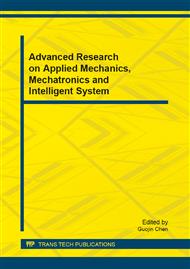p.107
p.111
p.117
p.121
p.125
p.129
p.132
p.139
p.145
The Cross-Eye Jamming Mathematical Modeling
Abstract:
A rigorous mathematical analysis of cross-eye jamming in a radar system scenario and an expression for the induced angular error due to the cross-eye jammer are presented. The simulation results show that there is a Doppler difference between jamming and target return. The Doppler difference increases with the decrease of the distance between the monopulse radar and the platform protected by cross-eye jammer. When the power of target return is not small enough with respect to the power of jamming transmitted by one of the two sources, maybe the sign of the indicated angle is uncontrollable. The simulation results also show that although the cross-eye gain is maximized if two jamming signals are equal amplitude and antiphase, it is not a reasonable choice.
Info:
Periodical:
Pages:
125-128
Citation:
Online since:
July 2013
Authors:
Keywords:
Price:
Сopyright:
© 2013 Trans Tech Publications Ltd. All Rights Reserved
Share:
Citation:


